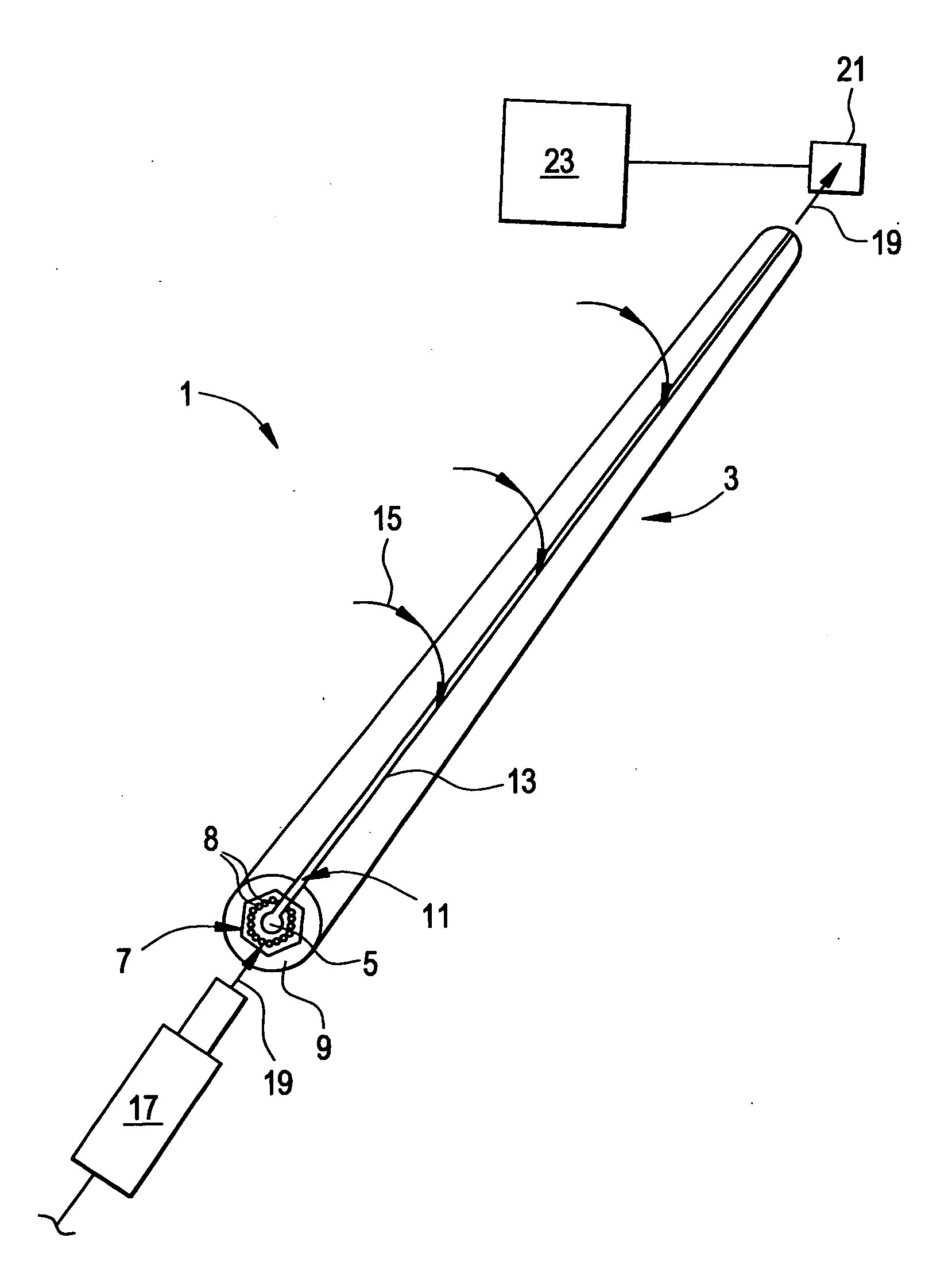Optical waveguide sensor and method of manufacture
a technology of optical waveguide and environmental sensor, which is applied in the field of optical waveguide environmental sensor, can solve the problems of limiting affecting the production run of expensive compositions, and affecting the usefulness of such sensors, so as to minimize the detection response time, reduce the response time, and maximize the exposure of the side
- Summary
- Abstract
- Description
- Claims
- Application Information
AI Technical Summary
Benefits of technology
Problems solved by technology
Method used
Image
Examples
Embodiment Construction
[0032]With reference now to FIG. 1, wherein like numerals designate like components throughout all the several figures, the optical waveguide sensor 1 of the invention preferably comprises a photonic band gap fiber 3 having a lattice-type microstructure 7 hereinafter referred to as cladding 7. The cladding 7 includes a pattern of different light conducting materials having different indexes of refraction, such as a pattern of air holes 8 (shown in FIGS. 2A-4F) in the silica present in the center of the fiber 3. Alternatively, the cladding 7 may be formed from an alternating pattern of two different solid light conducting materials, such as two different types of glasses, or a glass and a plastic material. Finally, the cladding 7 may be formed from alternating layers of such materials, so long as the differences in the index of refraction between the two materials effectively creates a “forbidden zone” that confines a least one optical mode within the hollow core 5. The cladding 7 is...
PUM
| Property | Measurement | Unit |
|---|---|---|
| length | aaaaa | aaaaa |
| diameter | aaaaa | aaaaa |
| radius | aaaaa | aaaaa |
Abstract
Description
Claims
Application Information
 Login to View More
Login to View More - R&D
- Intellectual Property
- Life Sciences
- Materials
- Tech Scout
- Unparalleled Data Quality
- Higher Quality Content
- 60% Fewer Hallucinations
Browse by: Latest US Patents, China's latest patents, Technical Efficacy Thesaurus, Application Domain, Technology Topic, Popular Technical Reports.
© 2025 PatSnap. All rights reserved.Legal|Privacy policy|Modern Slavery Act Transparency Statement|Sitemap|About US| Contact US: help@patsnap.com



